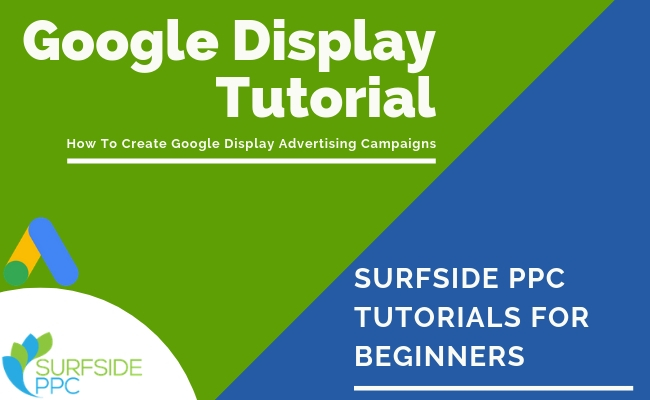
There are three basic types of social networking strategy: Relational or Transactional. Cross-functional is another. This strategy must maximize the benefits of these channels for your company. Each one has its pros and cons. These three social media strategies will be discussed in the following article. You will learn more about how each of these types can be beneficial for your business. Here are some tips to maximize your social media efforts.
Relational-oriented
A conceptual paper on relational-oriented marketing in social media aims to bring together these concepts and create a framework that can be used to measure the impact marketing has on social media. This framework will help us develop and measure social marketing strategies that improve customer relations. Ultimately, the goal of relationship-oriented social media marketing is to drive traffic to a business's website and increase sales. This is not possible without an effective strategy.

One company in particular has taken this concept to the next level by building relationships with its target audience: moms. Through its relationship-oriented social media marketing strategy, McDonald's has established close relationships with moms in various parts of North America. It even offers quality-correspondents who visit the company's restaurants to report on its products. Similar approaches have been taken by Levi Strauss, Dell, and Levi Strauss. The key to relationship-oriented social media marketing is to create an atmosphere where you are able to build a strong relationship with your customers and engage with them on a personal level.
Transactional
Social media marketing falls under the category of transactional and non-transactional. The type of interactions, intensity and strength of the connections are all factors that determine its effectiveness. This dynamic process can be difficult to explain and define. However, many scholars have proposed a continuum which includes low levels of engagement (such a "liking" of a page) up to high levels of involvement (such as cocreation).
The interactions between companies and customers have been intensified through the use of Social Media. The rise of social media has enabled firms to leverage customer networks and resources to increase geographic reach, strengthen brand evaluations, and build closer relationships with their customers. Social media allows customers to send messages and make marketing communication more collaborative. Transactional social marketing is key to maximising the effectiveness these new media. How can marketers make the most of this new tool for marketing?
Cross-functional
Companies need to create a cross-functional team that monitors and responds to customer feedback in order to get the most from social media. A cross-functional team can monitor, respond and monitor social media for all employees. This can increase the effectiveness of marketing departments. This team will match the right employees with right customers at the appropriate time. David Packard once stated, "Marketing cannot be left to marketers."

A successful cross-functional team will recognize and value the different roles of team members, including those who have a background in the area being addressed. To achieve this, it is essential that team members understand their roles, as well as their responsibilities. Assigning a single point of contact (SPOC) can simplify communication and eliminate task overlap and cut down on communication breakdowns. To ensure that all members are clear about their roles, it will be helpful to set brainstorming times and communicate expectations to everyone on the team.
FAQ
Do I need an agency to do Content Marketing?
No! No. There are many online tools that can help you create high quality content. Agents tend to be more expensive.
What can I do to improve my content marketing strategy
You can improve your content marketing strategy by focusing on audience, content, and distribution. To begin, you must understand your ideal client and where they spend their time online. Once you have this information, it is possible to tailor your content so that they are interested in what you are offering. The second step is to create a voice and style that differentiates you from the rest. You must also know how to effectively distribute your content.
What is the best Content Management platform?
There are lots of different platforms available today. Each platform has its pros, and each one has its cons. These are some of the most popular choices:
-
WordPress - It's easy to setup and maintain. A great community of users.
-
Wix is easier than WordPress to set-up and maintain. You don't need any technical knowledge.
-
Squarespace – Best choice for those with a website.
-
Blogger - Free blogging service
-
Medium - A place for writers to share their work.
-
Instagram - An image-based platform.
-
LinkedIn – A networking tool.
-
Facebook – A social network.
-
YouTube - Video sharing platform.
-
Pinterest - Image-based platform.
-
Google Analytics – Track visitor behaviors.
-
Hubspot - Email marketing software.
-
MailChimp, Email marketing software.
Why do I need a Content Marketing Strategy to succeed? Why not just post social media updates or send emails?
There are two main reasons that you might ignore a Content Marketing Strategy.
-
You may think that social media posts or email marketing is enough to get people talking.
-
If you've never tried email marketing, or posted on social networks, it's easy to assume this type of content is not feasible.
Both assumptions are false.
Email marketing and postings on social media can be great ways of communicating with prospects and customers. However, they aren't enough by themselves.
You can't rely on an email campaign to reach your goals. Your email campaign should be part a larger strategy. It won't be enough to just post on social media. They must be part of a comprehensive plan.
This is where your Content Marketing Strategy comes in. Creating a strategy that sets clear objectives for each piece of content allows you to manage your entire content creation process.
You'll have more time to concentrate on other important aspects of running your company, such as growing your audience and increasing conversions.
A Content Marketing Strategy is a great tool, but it doesn't necessarily make it easy.
A strategy can make all the difference.
What is strategic copy marketing?
Content marketing refers to the art of creating quality content that can be shared across all channels. It's all about giving people exactly what they want. The most successful companies are those who understand this.
Strategic Content Marketing gives you the ability to provide exactly what your clients need at precisely the right time.
It is important to understand what people care about, and to listen to their thoughts. It is important to provide high-quality content that solves their problems and answers their questions. This builds trust, loyalty, and ensures that you are always in their minds when they need your product/service.
Statistics
- Progress indicators (0–100%) allow each team member to see how attainable each goal is and understand what remains to be accomplished. (semrush.com)
- Seventy-two percent business to business (B2B) (mailchimp.com)
- In fact, would pay more for a better customer experience, and 86% of B2B buyers would pay more. (neilpatel.com)
- This marketing strategy landed Ford a 15.4% conversion rate. (neilpatel.com)
- According to research compiled by Coschedule: Companies that publish 16+ blog posts a month get as much as 3.5x as much traffic as those that publish 0-4 posts a month. (criteo.com)
- Measure your goals with a progress indicator of 0-100%. Make your goals collaborative and transparent (semrush.com)
- An example of an overarching goal could be: "In 2022, we want to achieve a 20% increase in revenue created by organic content and generate 15,000 MQLs with a budget of $30,000." (semrush.com)
- Forty-seven percent of buyers view 3 to 5 pieces of content before engaging with a sales representative. (mailchimp.com)
External Links
How To
How do you get started in content market?
The most effective way for companies to reach potential clients and generate leads online is through content marketing. By providing useful information about products and services, it helps you to connect with potential clients.
Content marketing also encourages trust among visitors, which increases brand loyalty, resulting in increased sales conversions and profits.
To get started, you can create a blog. Blogs are easy to use and allow you post new articles frequently.
This allows people who have read your work to return often. For example, you can make use of social media sites such as Facebook and Twitter to share relevant news and information with followers.
YouTube also allows you to make videos. These videos can be used to educate your viewers about topics relevant to your business.
Finally, you can create infographics using tools like Canva. Infographics allow you to visualize data. They can be used to explain complex concepts and make it easier to absorb information.
Your chances of reaching new readers are greater if you post more often and consistently.